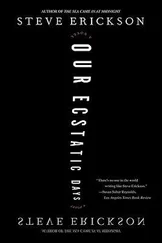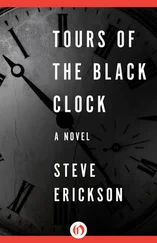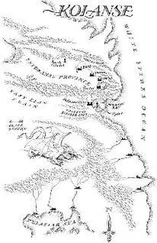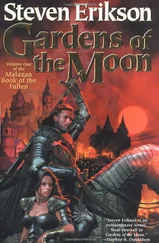To this day, according to Erickson’s dinner companions, the professor still didn’t know. To this day, the story went, he was still down in the tunnel. Not understanding the first thing about digging a tunnel, with no map and apparently not much sense of direction, the professor continued digging until finally, after weeks or months, he made a breakthrough, hacking his way with a pick into what he hoped was the targeted destination, the cellar of a house off Potsdamerstrasse west of the Wall. What he found instead was that he had returned to an earlier point of the tunnel. Slowly and gradually he had circled back on himself. His despair and panic must have been unutterable. For ten years the Tunneler honeycombed the no-man’s-land of the ghost Wall; amid the new, unfinished Potsdam Plaza one could hear his echoes from underground in the plaza’s empty corridors.
The strange thing was that afterward Erickson began hearing this absurd story everywhere, from anyone still left in the city. Whenever he bumped into someone long enough to have more than a three-minute conversation, the tale of the Tunneler came up. He heard it not only in the drunken Teutonic slur of the bars but from other tourists and little old ladies in bookshops and stray bankers from Frankfurt on the U-Bahn, one of whom, standing on the train, pointed at a hole in the underground wall of Kochstrasse station and said to Erickson, out of the blue, “Tunneler.” Excuse me? the American answered, not even sure the German was speaking to him, and the Frankfurt banker told him the story of how the Tunneler had dug his way into the U-Bahn and then, terrified he was still in the East, retreated, scurrying back into the blackness. And as Erickson looked at the hole in the wall of the darkened subway he remembered the last time he had come to Berlin, two years after the fall of the Wall, and how he took the U-Bahn from west to east and could still feel the passage from what had once been one side to what had once been the other; the ghosts of division still lurked in the underground. In the case of the Tunneler, however, he’d simply been underground too long, because the fact was that even if there had still been a Wall, Kochstrasse would have placed him not back in the East but in the West, about half a block beyond what was once Checkpoint Charlie.
It was in the rundown Ax Bax Bar near his hotel that the American writer first saw Georgie. He was a twenty-year-old skinhead and reputedly one of the leaders of the Pale Flame, but he didn’t appear to be leader of anything; with a face that was almost pretty, his mouth delicate like a girl’s, Georgie had a serene sweetness that knocked the edge off any hints of violence, sitting at the table laughing at jokes that didn’t include him, told by strangers standing around talking to other strangers. Every time Georgie laughed at one of the jokes, someone looked at him in dismay and moved to another part of the bar. This didn’t seem to perturb Georgie either. Erickson saw him again a few days later at another bar in Kreuzberg, and then about a week after that at the Brandenburg Gate.
The American was walking along the desolate stretch where the old Wall used to be, between the gate and the deserted Potsdam Plaza project, looking at the beginning of the Neuwall. In the distance he could hear the escaped monkeys from the zoo that now lived in the trees of the Tiergarten; as he drew nearer to the gate an alligator shot out of the garden, trailing the water of one of the ponds and slithering across the ugly barren scar of the old border to disappear toward Alexanderplatz. The Neuwall was built in the dead of night; the Pale Flame usually came along afterward to kick down the results. Sometimes the two forces battled in the gate’s shadow among the patches of moonlight. Begun in 1995 by a coalition of Stasi victims and Stasi informers, the Neuwall’s mortar was made from the rubble of the old Wall as well as the reduced paste and pulp of old Stasi files, which numbered in the millions, and whatever pieces of the Potsdam project — a pillar, a post, a demolished corridor — could be spirited away for the effort. The members of the Neuwall Brigade long ago agreed, not formally but implicitly, never to identify among themselves who had been informers and who had been informed upon, an unspoken treaty that was a by-product of why they seized the files in the first place, when the revelations of 1992 were exposing fellow workers and friends and husbands and wives and children to each other. They began the Neuwall not to eliminate freedom but to resurrect the promise that freedom held only when it was denied; they continued the Neuwall as a tribute to the way the old Wall was the spine of the world’s conscience, without which humanity was left to its own worst impulses in considering the final resolution between authority and freedom, order and anarchy.
More than this, however, the Brigade believed — for reasons similar to those that brought Erickson to Berlin — that the city’s function as the urban metaphor of the Twentieth Century couldn’t be fulfilled without a Wall. When the Wall fell and there stood behind it the naked figure of freedom, those in the East couldn’t stand the voluptuousness of her body while those in the West couldn’t stand the humanity of her face: there was the awful revelation that while at the outset of the millennium’s last decade people had pursued and embraced the ideal of freedom, at decade’s close they had come to despise its moral burden and absolve themselves of it. The Neuwall was bone white. It bore no graffiti. Earlier, upon its desecration by the Pale Flame and other gangs, someone among the vandals was just shrewd enough to realize they were only completing the concept, that their graffiti had already been anticipated and was part of the blueprint; thus the Pale Flame simply tore the Neuwall down when they could find it, otherwise leaving it unmarked. The Neuwall’s only message was written there by the Brigade itself: HITLER WAS ELECTED. Now the Pale Flame patrolled the city in vain looking for blurts of the Neuwall, which didn’t follow the path of the old but rather an inebriated, slapstick zigzag through the city. The old denominations of East and West no longer mattered; now what mattered was the mortified memory of a wall. It rocketed wildly up this street and down that one. For all that the Berliners of the year 1999 knew, any one of them might go to sleep at night only to find himself barricaded in the next morning, a wave of old Wall rubble and Stasi files petrified in his doorway, through which the only recourse was to tunnel.
Among the vendors still left at the Brandenburg Gate after the Wall’s fall, the American stopped to check out the Wall’s sad remains, undistinguished except for the vendors’ historical claims and, if one looked closely, some telltale bit of graffiti. Erickson always thought about buying a piece, just because someday soon it was all going to be gone. He had this idea that on Day X he’d sit in the hotel window clutching his bit of the Berlin Wall like a human time capsule, taking it with him to the other side. On this particular day that he saw Georgie at the gate, Erickson finally picked out a piece, at first glance the most nondescript chunk on the table because the flat outside part of the stone was blank, not a scribble of graffiti on it to note anything of the Wall at all; rather its markings were on the other side. Which didn’t make any sense, since the other side was part of the Wall’s craggy gray innards, where it wasn’t possible for anyone to have written anything. Yet there it was, the fragment of rhetoric: pursuit of happiness, and Erickson bought the stone and put it in his coat pocket and turned around and was staring right into Georgie Valis’ face.
He was smiling. The writer didn’t know whether Georgie remembered seeing him in Kreuzberg or the Ax Bax; maybe he was just hanging around the Brandenburg looking for a tourist to mug. Erickson would have thought it was pretty obvious he wasn’t worth mugging. At any rate Georgie was smiling and he started to talk and spoke perfect English, with barely a trace of an accent, or rather he spoke perfect American, which wasn’t necessarily surprising since the most interesting thing about Georgie wasn’t his repellent political affiliations but what two total strangers had told Erickson on the previous occasions he’d seen Georgie, that on the morning in 1989 when the East German professor left his house ostensibly for work but in fact to begin his life as the Tunneler of legend, Georgie was the ten-year-old son he held so close to him that final time.
Читать дальше











